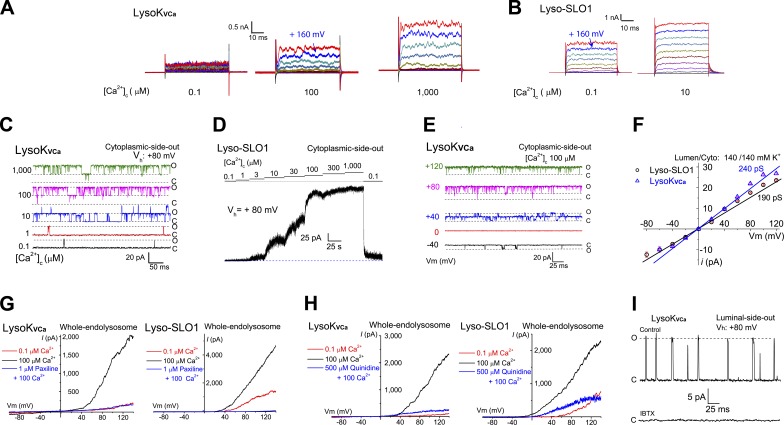Figure 3.
LysoKVCa is a lysosomal large-conductance K+ channel that is dually activated by Ca2+ and voltage. (A) LysoKVCa currents were activated by cytoplasmic Ca2+ ([Ca2+]C; 0.1, 100, and 1,000 µM). After a 20-ms prepulse at −60 mV, currents were elicited by voltage steps from −80 to 180 mV in 20-mV increments. (B) Activation of Lyso-SLO1 by Ca2+ and voltage steps. (C) [Ca2+]C-dependent single-channel LysoKVCa currents from a cytoplasmic-side-out patch. The open and closed states are indicated by O and C, respectively. (D) [Ca2+]C dependence of macroscopic Lyso-SLO1 currents. (E) Voltage-dependent openings of single LysoKVCa channels at [Ca2+]C of 100 µM in a cytoplasmic-side-out patch with symmetric (luminal/cytoplasmic) K+ (140 mM) solutions. (F) Unitary single-channel chord conductances of LysoKVCa and Lyso-SLO1. (G) LysoKVCa and Lyso-SLO1 currents were blocked by the BK-specific inhibitor paxilline (1 µM). (H) Quinidine (500 µM), a SLO1/SLO3 channel inhibitor, blocked LysoKVCa and Lyso-SLO1 currents. (I) Single LysoKVCa currents were inhibited by bath application of 100 nM IBTX to a luminal-side-out patch.

